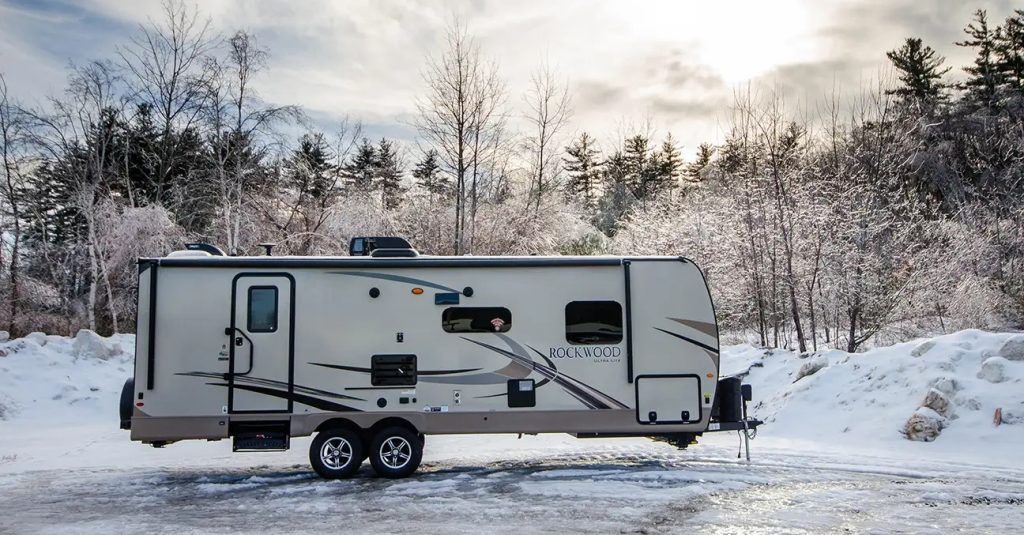
As the vibrant hues of fall give way to the frosty embrace of winter in the Midwest, it’s time for RV owners to think about winterizing their homes on wheels. Properly preparing your RV or travel trailer for the colder months is crucial to prevent damage and ensure it’s ready for your next adventure. Here’s your essential guide to winterizing your RV.
1. Drain and Flush the Water System:
- Empty Tanks: Start by draining the fresh water, grey water, and black water tanks. Ensure all valves are open and tanks are completely emptied.
- Bypass the Water Heater: If your RV has a water heater bypass, engage it to prevent antifreeze from entering the heater.
- Flush the System: Use compressed air to blow out any remaining water in the pipes. Then, add non-toxic RV antifreeze to the system, following the manufacturer’s instructions.
2. Protect the Interior:
- Remove Perishables and Valuables: Clear out any food that could spoil and remove valuables that might be damaged by cold temperatures.
- Clean Thoroughly: Give the interior a thorough cleaning to prevent mold and pests. Pay special attention to the refrigerator, freezer, and any other areas where food residue might linger.
- Moisture Control: Place moisture absorbers throughout the RV to prevent dampness and mold growth.
3. Care for the Exterior:
- Seal Leaks: Inspect the exterior for cracks or gaps, especially around windows, doors, and seams. Use a quality sealant to address any issues.
- Cover Vents and Openings: Use RV covers for vents and other openings to prevent pests from making your RV their winter home.
- Protect the Tires: Inflate tires to the recommended pressure and cover them to protect against weathering and sun damage.
4. Battery Maintenance:
- Fully Charge Batteries: Ensure all batteries are fully charged before storage.
- Disconnect and Store: If possible, disconnect the batteries and store them in a cool, dry place to prevent discharge and damage from freezing temperatures.
5. Prepare the Engine and Fuel System:
- Change the Oil: Fresh oil will help prevent corrosion in the engine.
- Fuel Stabilizer: Add a fuel stabilizer to the gas tank and run the engine for a few minutes to distribute it through the system.
6. Secure and Cover the RV:
- Close Windows and Blinds: Keep all windows and blinds closed to prevent sun damage to the interior.
- Use an RV Cover: If storing outside, use a breathable RV cover to protect against snow, ice, and debris.
Conclusion:
Winterizing your RV or travel trailer is an essential part of responsible RV ownership in the Midwest. By following these steps, you’ll protect your investment from the harsh winter elements and ensure it’s ready for the road when spring arrives. If you have any questions or need assistance with winterizing your RV, our team at [Your Dealership Name] is here to help. Contact us today, and let’s keep your home on wheels in top condition for all your travels.
